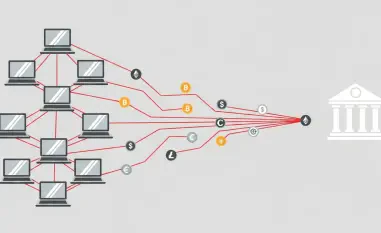What happens when digital threats spill into the real world, locking not just data but also lives in a vice of fear, and how can Europe fight back against this escalating menace? Across the continent, a chilling wave of ransomware attacks has surged by 13% over the past year, ensnaring 1,380 organizations in a web of cyber extortion. This alarming statistic paints a stark picture of a region under siege, where cybercriminals are no longer content with virtual havoc but are escalating to physical intimidation. The stakes have never been higher for businesses and governments alike.
The significance of this crisis cannot be overstated. With Europe accounting for 22% of global ransomware victims—second only to North America—the region’s economic strength and stringent regulations make it a prime target. Beyond the numbers, the emergence of hybrid threats combining data theft with violence signals a dangerous evolution in cybercrime. This story delves into the heart of this escalating menace, exploring why Europe is in the crosshairs, how industries are being hit, and what can be done to fight back against an enemy that operates in both digital and physical realms.
A Looming Shadow over Europe’s Digital Borders
Europe’s digital landscape is increasingly under threat as ransomware attacks grow in both frequency and ferocity. Between September 2024 and the present, over 1,380 organizations have fallen victim to these schemes, marking a significant 13% increase compared to the previous year. The United Kingdom leads as the most targeted nation, followed closely by Germany, Italy, France, and Spain, highlighting a widespread vulnerability across the continent.
This surge is not just a statistic but a wake-up call for businesses of all sizes. Cybercriminals are exploiting unmanaged systems and outdated security protocols, often gaining entry through seemingly harmless means. The impact is felt not just in boardrooms but in everyday operations, as companies scramble to recover data and restore trust with clients and partners.
The ripple effects extend beyond immediate financial losses. With over 2,100 entities named on extortion leak sites since January of this year, the public shaming and potential regulatory fines—especially under strict laws like GDPR—add layers of complexity to an already dire situation. Europe’s position as a global economic hub only amplifies the urgency to address this growing threat.
Why Europe Attracts Cyber Extortionists
The continent’s status as an economic powerhouse makes it an irresistible target for ransomware gangs. High-value enterprises in nations like the UK and Germany offer lucrative payouts, while the concentration of prosperous industries creates a fertile ground for exploitation. This economic allure is compounded by geopolitical tensions, with Russian-linked groups often at the forefront of these malicious campaigns.
Regulatory frameworks, while designed to protect data, can inadvertently fuel the problem. GDPR, for instance, imposes hefty penalties for data breaches, which cybercriminals exploit as leverage to demand ransoms. Companies, fearing both financial loss and reputational damage, are often pressured into paying, perpetuating the cycle of extortion.
Beyond economics and regulations, the sophistication of attackers plays a critical role. Over 260 initial access brokers have been found advertising entry to more than 1,400 compromised European entities in underground markets. This thriving black market for stolen access underscores how Europe’s digital infrastructure, while advanced, remains perilously exposed to those with malicious intent.
Industries and Tactics under Siege
Ransomware attacks in Europe spare no sector, but manufacturing, technology, and retail face the heaviest blows. These industries, often targeted through “big-game hunting” strategies, are hit hard due to their high revenue and critical operations. Groups like Akira, with 167 victims, LockBit at 162, and RansomHub with 141, dominate the landscape, employing ruthless methods to maximize damage.
Tactics have evolved to include credential dumping from backup databases and remote file encryption via unmanaged systems. Data theft is almost universal, with 92% of incidents involving both encryption and exfiltration, as reported in recent analyses. Additionally, the use of Linux ransomware on VMware ESXi infrastructure shows how attackers are adapting to exploit specific technological vulnerabilities.
Emerging methods add another layer of concern. Vishing, or voice phishing, has gained traction with groups like Scattered Spider targeting major UK firms such as M&S, using native speakers to deceive employees. “ClickFix” attacks, delivered through phishing emails with CAPTCHA lures, further illustrate the creativity and persistence of these cybercriminals in breaching defenses.
Voices from the Cybersecurity Trenches
Cybersecurity experts are sounding the alarm on the audacity of ransomware actors. “The blend of technical skill and sheer boldness is unprecedented,” notes a leading analyst, pointing to the integration of geopolitical motives in many attacks. Russian actors, in particular, are cited as key players, driven by both profit and political agendas, creating a volatile mix that challenges traditional defenses.
Real-world cases bring the threat into sharp focus. In the UK, firms like the Co-op Group have faced vishing campaigns designed to extract sensitive information through deception. Such incidents reveal how attackers are personalizing their approaches, often tailoring scams to specific cultural or linguistic contexts to increase their success rates.
International response is ramping up in the face of these challenges. Europol has established a dedicated taskforce to combat violent cybercrime syndicates, spurred by incidents like the kidnapping of a Ledger co-founder in France earlier this year. With 17 documented cases of Violence-as-a-Service since January, including 13 in France, the urgency to address this hybrid threat—where digital attacks lead to physical harm—has become a top priority for law enforcement.
Building Defenses against a Dual Threat
Organizations across Europe must adopt a multi-pronged approach to safeguard against ransomware. Implementing robust cybersecurity measures, such as multi-factor authentication and regular system updates, forms the first line of defense. Employee training to recognize phishing and vishing attempts is equally critical, as human error often serves as the entry point for attackers.
Preparation for worst-case scenarios is non-negotiable. Secure backup systems can thwart credential dumping, while monitoring unmanaged devices helps close potential gaps. An incident response plan, complete with legal and public relations strategies, ensures companies are ready to navigate the fallout of an attack, including potential GDPR violations and ransom demands.
Collaboration with international bodies offers a broader shield. Sharing intelligence on emerging threats like Violence-as-a-Service with organizations such as Europol can help preempt attacks. By uniting technical resilience with global cooperation, European businesses can stand stronger against the dual menace of digital extortion and physical intimidation.
Reflecting on a Battle Fought
Looking back, the past year exposed Europe to an unprecedented escalation in ransomware attacks, with a 13% rise in victims marking a grim milestone. The targeting of key industries and the chilling integration of physical violence through tactics like Violence-as-a-Service revealed the depths to which cybercriminals were willing to sink. Each incident, from digital breaches to real-world kidnappings, underscored the urgent need for a fortified response.
Moving forward, the path demands innovation and unity. Businesses must invest in cutting-edge cybersecurity tools while fostering a culture of vigilance among employees. Governments and international agencies, having seen the cross-border nature of these threats, need to deepen partnerships to track and dismantle cybercrime networks. Only through such coordinated efforts can Europe hope to reclaim security in an era where threats lurk in both code and shadow.













